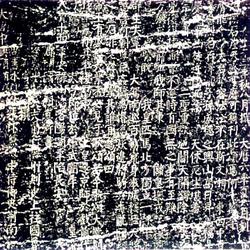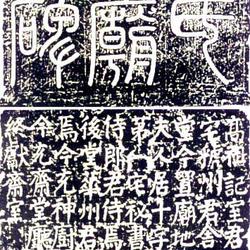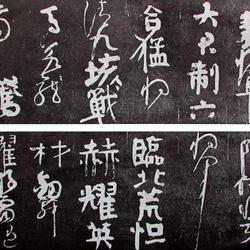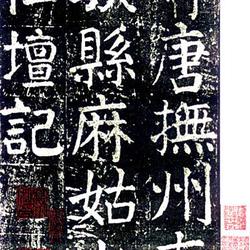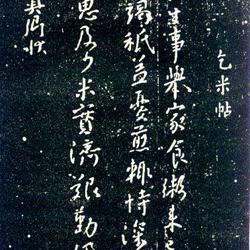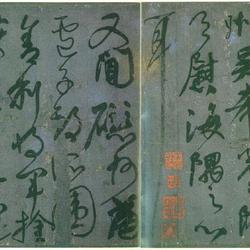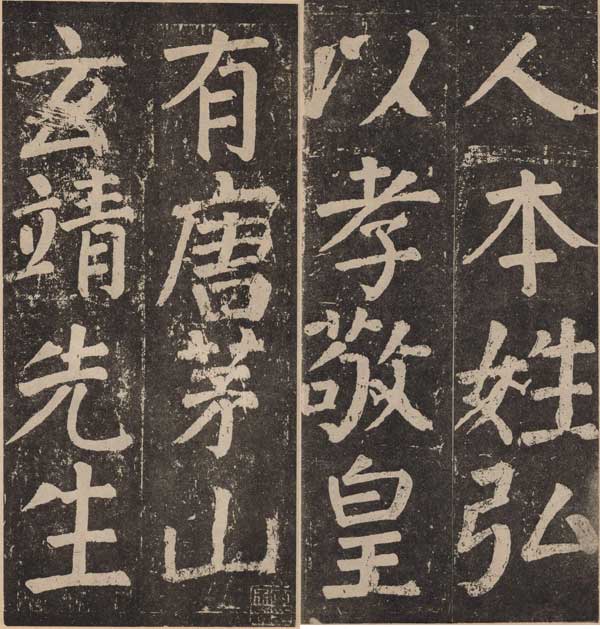
The full name of "Li Xuanjing Stele" is "With the Preface to the Inscription on Li Jun's Stele in Guangling, Maoshan, Tang Dynasty". The monument was originally erected in Yuchen Temple, Maoshan, Jurong County, Jiangsu Province. According to "Inscriptions and Stone Collection": "The stele has been broken. It is about one foot high, three feet two inches wide, one foot and four minutes thick. It is carved on four sides, with nineteen lines on the front and back, four lines on each side, and Thirty-nine characters, the official script." The common practice in ancient times for engraving stele is to first write the inscription on the right side with a vermilion pen, which is called "Shu Dan" or "Yong Dan", and then the engraver will engrave it according to the handwriting. Generally, the forehead of the stele is the title, and the top of the stele is the title. (front) is the main text, and the Yin (back) side of the stele (left and right) is the title. It may be that the inscription is too long, or it may mean that the owner of the stele has too many deeds to tell and deliberately engraved all four sides of the stele, so it is called a four-sided stele.
2 It is said that as early as the second year of Qianyuan (759), when Yan Zhenqing was appointed governor of Shengzhou, he sent a letter to Maoshan to express his "admiration for Xuanwei". Li Hanguang instructed Master Wei Jingzhao to answer. Although Yan Zhenqing originally wanted to live in the mountains and forests, he eventually "went against his long-cherished wish and wandered around the county, but he had no respect for Taoism." Later, when he was appointed as the governor of Huzhou, he passed by Maoshan and learned that Hanguang had already emerged. He was filled with emotion and wrote "With the inscription on the stele of Mr. Xuanjing of Maoshan in Tang Dynasty and Li Jun in Guangling".
This stele was erected in the twelfth year of the Dali calendar (777). It broke in the seventh year of Shaoxing in the Southern Song Dynasty (1137). It was shattered by flint in the third year of Jiajing in the Ming Dynasty (1524). Fangruo of the Qing Dynasty said in "Essays on the School Stele": "There are fourteen stones in this stele, and the total number of half characters is 461 characters." He also said that "Qianlong Renzi Wang Jiamen Zhi Yi Tu visited only Twenty-three stones, but there are still more than 1,400 characters in full and half. The whole stele has more than 1,600 characters, so there are more than 560 characters in the whole stele. There are about 200 more characters. After Jurong suffered a war, the stones were lost again. In Tongzhi, Bingyin and Zunyi, the Zhao family obtained fifteen stones, a total of one hundred and ninety-seven characters. Three small stones were lost, totaling fifteen characters, and they were found in Renshen, Yangzhou and Zhang. After the visit, two stones were moved to the Academy, with a total of 279 characters. ... All the steles in Maoshan today are over-engraved. The strokes are thin and thin, lacking the vigorous spirit of Lu Gong, and there are more than 70 errors in the characters." The early rubbings from the Southern Song Dynasty were collected by Li Zonghan in Linchuan during the Qing Dynasty. The text was slightly incomplete and was supplemented by the Huohou version.
"Li Xuanjing Stele" is majestic and magnificent, ancient and vigorous, with an eye-catching momentum, and has the style of seal script and official script. The brush strokes are straight and graceful, round, strong and thick, and the strokes are appropriately sparse and dense, regular and stable. The writing is deep and implicit, and the knots are open and stretched. As Liang Jie said in "Cheng Jin Zhai Ji Wen Lu": "Yan Lugong Maoshan's "Li Xuanjing Stele" is elegant and round, with a seal meaning, similar to the "Yuanci Mountain Stele". At first glance, it looks very scattered and clumsy. , many are uneven, but in fact the ancient meaning can be reached, which is beyond the reach of "Ode to Portraits" and "Ode to Zhongxing"." Perhaps "the word Lu Gong is already ancient in the "Li Xuanjing Stele" (Liang Chen's "Chengjin Zhaiji Wenlu" "), it cannot be learned by beginners, so it is not as famous as "Duobao Pagoda Stele" and "Yan Qinli Stele".

